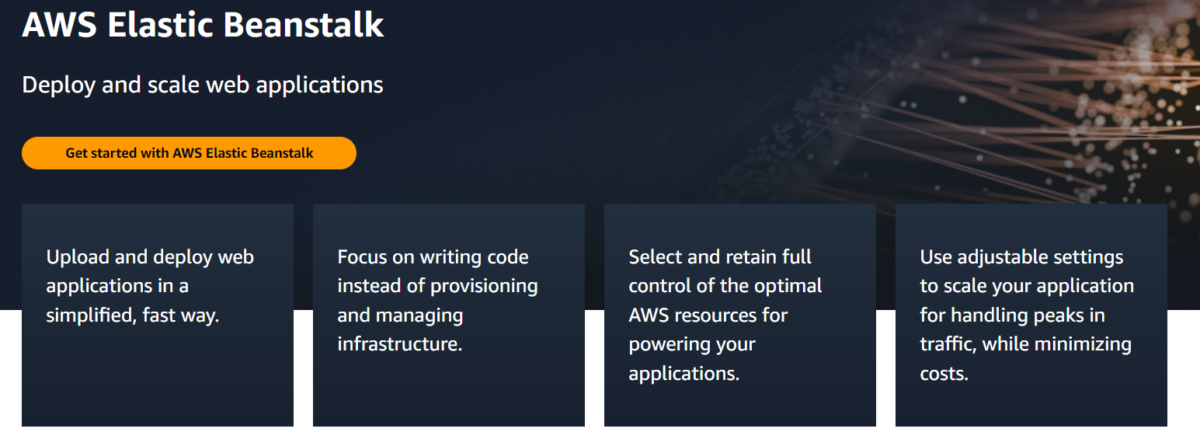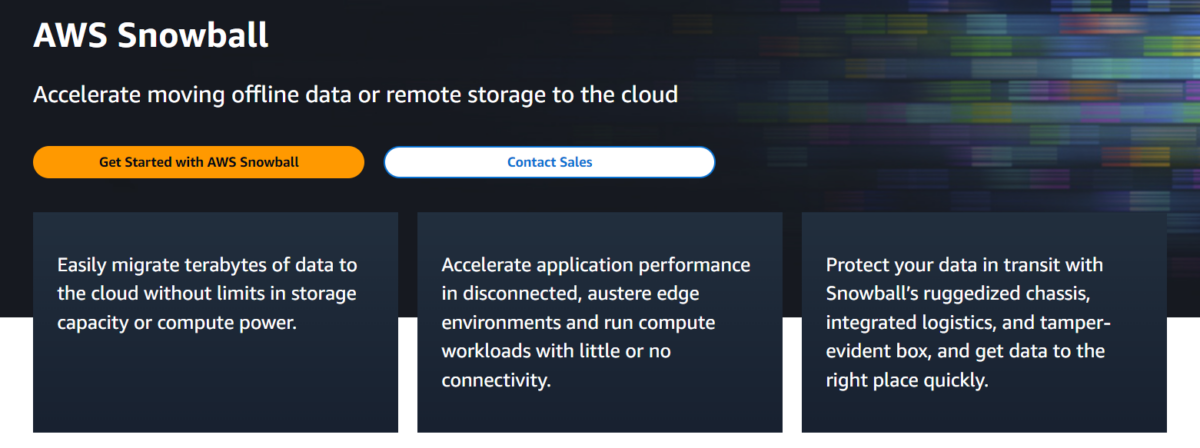We earn commission when you buy through affiliate links.
This does not influence our reviews or recommendations.Learn more.
Starting to learn AWS can be a difficult job.

This blog will help you familiarize yourself with some AWS Key Terminologies and help advance your AWS Learning.
AWSis the biggest and the most popular cloud provider in the world.
With the increasing popularity of AWS, there is an ever-increasing demand for skilled AWS developers and architects.

This is the best time to get your hands dirty with cloud technologies like AWS to advance your career.
But, it is not easy to start learning an unfamiliar technology.
AWS has over 200 services, and it can get confusing fast.

One of the most common use cases is to expose AWS Services to non-AWS applications via an API.
Amazon Aurora:AWS Aurora is a fully managed MySQL and PostgreSQL relational database service from AWS.
It is specifically built and optimized for the AWS cloud to fully utilize the benefits of cloud storage.
Amazon CloudWatch:AWS Cloudwatch is a built-in monitoring and observation service for AWS Resources.
It provides data and actionable insights that we can use to monitor applications and respond to certain scenarios.
It provides secure and resizable virtual servers (calledEC2 instances) for all kinds of needs.
Amazon Elastic Block Store:AWS Elastic Block Store, akaEBS, is a block storage service from AWS.
We can use EBS to provision block storage devices called the EBSvolumes.
These file systems can then be accessed via EC2 instances and on-premise servers.
Amazon IAM:AWS IAM is a service to manage users and their access permissions within an AWS account.
Amazon Lightsail: AWS Lightsail allows developers to quickly provision and maintain web servers.
It can be used for small use cases that require minimal configuration changes.
Lightsail offers bundled packages like a WordPress Lightsail for you to quickly deploy WordPress applications.
Amazon S3: AWS S3 is the most widely used storage service from AWS.
S3 has virtually infinite storage capacity, and you only pay for the storage you use.
Glacier is specifically designed for infrequently accessed data, where a retrieval time of several hours is acceptable.
Amazon Simple Email Service: AWS SESis an easy-to-use and cost-effective email solution for applications.
Amazon Simple Notification Service:AWS SNS is used to instantly send and receive notifications in the AWS Cloud.
SQS can be integrated with other AWS Services which push and retrieve messages from SQS queues.
Amazon Virtual Private Cloud:AWS VPC is used to provision logically isolated cloud networks.
AWS VPC gives you full control over the routing capabilities, security, and connection configurations within this cloud.
AWS CodeBuild: AWS CodeBuild is a serverless continuous integration service from AWS.
AWS CodeCommit:AWS CodeCommit is a service that allows you to host private Gitrepositories like BitBucket or GitHub.
AWS CloudTrail: AWS CloudTrail records all the API calls in your account.
It is a highly used AWS Service that can be integrated with many AWS Services.
For example, you could store and encrypt usernames and passwords for database access.
AWS Snowball: AWS Snowball is a petabyte-scale data migration service from AWS.
Alarm: The team alarm in AWS is generally used to refer to the AWS CloudWatch Alarms.
Customer Managed Policy:IAM policies managed by AWS users are known as customer-managed policies.
These policies are created and maintained by users.
AWS Managed Policy:IAM policies that are created and maintained by AWS are called AWS-managed policies.
All accounts have some default AWS-managed policies that are free to use.
If this request fails, your health check will fail.
Edge Locations:Edge locations are data centers for AWS Services to perform certain actions.
For example, CloudFront uses Edge locations to cache your static data and decrease the latency of your utility.
Amazon Resource Name:ARN is a standard way to refer to a resource in AWS.
All AWS resources have a unique ARN.
Availability Zone: Availability Zone, also sometimes called AZ, is a distinct data center in aRegion.
Each AZ is isolated from failures in other AZs in the region.
Hence, spreading your system servers across AZs is the recommended approach for high availability requirements.
As the name suggests, the ASGs can scale up and down automatically based onEC2 AutoScaling Policies.
We can create buckets using the AWS S3 console.
Bucket Owner:The organization or the person who owns an AWS S3 bucket is called a bucket owner.
So, for example, if I have a bucket namedmy-geekflare-bucketin my account, I am its owner.
You cannot create another bucket with this same name on AWS.
CIDR block: CIDR blocks are groups of IP addresses that share the same prefix.
For example, 10.0.0.0/8 is a CIDR block that has all the IP addresses starting from 10.0.0.0 to 10.255.255.255.
Continuous Delivery:The term continuous delivery is not specific to AWS.
Cross-account Access: The process of permitting users in another AWS account to use resources in your account.
To do something like this, you will have to grant the other account usercross-account accessto your account.
Note that this term may also be generally used to specify sharing of data to different AWS regions.
Customer Master Key: CMKsare the encryption keys managed by the AWS Key Management Service.
DB snapshot:Snapshots are point-in-time backups of your databases, typically stored in AWS S3.
Dedicated Host:An Amazon EC2dedicated host is a physical server dedicated for your use.
Dedicated hosts give you complete control and visibility on how instances are placed on the dedicated host server.
When using dedicated instances, you do not have control or visibility about instance placement.
AWS ensures that your dedicated host EC2 instances are physically isolated at the host hardware level.
Decrypt: It is the process of using Encryption keys to make encrypted data intelligible.
Even if a malicious entity gets encrypted data, they cannot read it without decrypting it first.
IAM group:IAM groups are logical groups of IAM users.
it’s possible for you to use IAM Groups to simplify attaching policies to multiple users.
IAM role:An IAM role is an entity used to give access to AWS Services.
IAM user:IAM users are entities that a person assumes to be able to access AWS Services.
Instance Store:Instance store is disk storage that is physically attached to the host of the EC2 instance.
Other AWS storage services like EBS are connected to EC2 via a web link.
Some EC2 instance types have instance stores for quick data access.
Object:The files stored in AWS S3 are called objects.
Reserved Instances:EC2 instances provisioned with long-term commitment are called Reserved Instances.
Using Reserved Instances provides a heavy discount (up to 70%) compared to on-demand instances.
Principal:Principal is the entity addressed in Policies.
Principals can be a user, service, or a different AWS account.
Region: An AWS region is a physical geographical location in the world where AWS has its data centers.
Subnet: Subent is a logical part of the VPC CIDR block where we can launch our AWS resources.
This helps us group resources as per the security and web connection needs.
Route Table:A Route Table is a set of routing tables that control the traffic leaving a subnet.
Public Subnets:Public Subnets are the subnets that have a route table entry to the Internet Gateway.
Resources in public subnets are accessible over the internet.
You should deploy your customer-facing applications and resources in Public Subnets.
Private Subnets.Subnets that do not have a route table rule to enter the internet gateway are called private subnets.
The resources in private subnets can only be accessed by other resources within the VPC.
You should deploy back-end applications and databases in Private Subnets.
Scale in:Scale in means to decrease the capacity of a service.
For example, terminating instances in an AutoScaling Group.
Horizontal Scaling:Horizontal scaling means changing the number of instances or resources to perform scaling activities.
Launching and terminating instances in an AutoScaling Group are examples of Horizontal Scaling.
This rule will allow this instance to serve web traffic.
Security groups are frequently used in AWS.
Client-side encryption:Encryption data on on-prem servers before sending it to AWS is called client-side encryption.
Tags:Most AWS Services have key-value pairs of metadata called Tags.
Transport Layer Security: TLS is a cryptographic protocol that provides security for communication over the internet.
VPC endpoint feature allows us to create a private connection for instances in VPC to access S3 buckets.
Wrapping Up
So, this was all about the AWS Key Terminologies.
I hope you like this helps you develop a basic understanding of AWS Services and some key features.